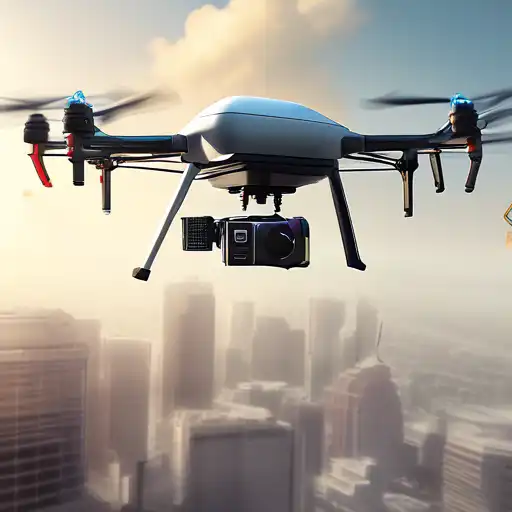Introduction to Commercial Drones
Commercial drones, also known as unmanned aerial vehicles (UAVs), have revolutionized industries by offering innovative solutions for photography, agriculture, delivery services, and more. Their ability to access hard-to-reach areas and perform tasks efficiently has opened up new opportunities for businesses worldwide.
Opportunities Presented by Commercial Drones
The use of commercial drones spans various sectors, providing significant benefits such as cost reduction, improved safety, and enhanced operational efficiency. Below are some key areas where drones are making an impact:
- Agriculture: Drones are used for crop monitoring, spraying, and surveying, helping farmers increase yields and reduce costs.
- Real Estate: Aerial photography and videography offer unique perspectives of properties, enhancing marketing efforts.
- Delivery Services: Companies like Amazon are experimenting with drone deliveries to expedite shipping times.
- Construction: Drones provide site surveys and inspections, improving project management and safety.
Understanding Drone Regulations
While the opportunities are vast, the use of commercial drones is subject to regulations to ensure safety and privacy. In the United States, the Federal Aviation Administration (FAA) governs drone operations through Part 107 of the FAA regulations. Key requirements include:
- Pilots must obtain a Remote Pilot Certificate.
- Drones must weigh less than 55 pounds.
- Operations are limited to daylight hours and visual line-of-sight.
- Flights over people and moving vehicles are restricted without a waiver.
Internationally, regulations vary by country, but the emphasis on safety and privacy remains consistent. It's crucial for operators to familiarize themselves with local laws before deploying drones for commercial purposes.
Navigating the Future of Commercial Drones
As technology advances, the potential applications for commercial drones continue to expand. Innovations such as beyond visual line-of-sight (BVLOS) operations and automated traffic management systems are paving the way for more complex and widespread use. However, the evolution of regulations will play a critical role in shaping the industry's future.
For businesses looking to leverage drone technology, staying informed about the latest developments and compliance requirements is essential. Partnering with experienced drone service providers can also help navigate the regulatory landscape and maximize the benefits of UAV technology.
Conclusion
Commercial drones offer transformative opportunities across various industries, but their use is accompanied by a complex regulatory framework. By understanding both the potential and the legal considerations, businesses can effectively integrate drones into their operations, driving innovation and competitive advantage.
